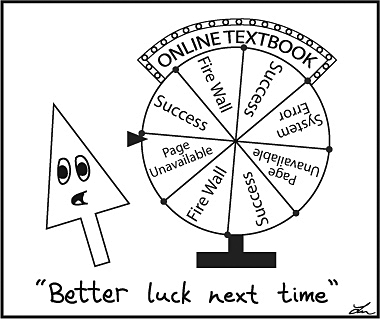Proposed online textbook conversion faces criticism
December 1, 2015
Today’s teens live on their technology – always on cell phones, social media, streaming videos and music. However, a recent push to put textbooks online has the vast majority of these tech-savvy teens digging in their heels – and for good reason.
Textbook companies are pushing school districts to transfer their stock of books to the digital realm. Computer copies are cheaper to make than physical ones, and these companies stand to profit significantly from a transfer. Students, on the other hand, believe that online book services are unreliable. Besides, they say, it’s easier to learn with a physical copy anyway. The district itself is caught in the middle. Administrators must try to find a balance between its budget and the requests of its students. Students deserve to have a say in the way their education is run. In this case, they say no to online books.
Online books aren’t dependable. Students who oppose the switch point out that trying to access anything on the school wifi is a nightmare. They might invite you to imagine if entire classes had to login to their textbooks at the beginning of each lesson. Half of the class period would be spent waiting for the books to load. Logging on at home could also prove difficult for many students. The websites for books that have already been digitalized can be confusing, and they sometimes require large downloads. In addition, teacher instructions on what portions of the book to download are frequently ambiguous. A math teacher using the online pre-calculus book, for instance, might identify a book assignment by page number, only for the students to discover that the website is not labelled accordingly.
The textbook companies, on the other hand, present a very different perspective on the matter. They have submitted that physical textbooks are overly expensive, and handing them out to students is too much of a liability. School textbook administrator Dean Hofer confirms that, too frequently, physical books get handed back with pages ripped out, or with graffiti covering the text. Sometimes, they don’t get returned at all. Putting the books online would quickly remedy these problems. Online access is certainly cheaper than purchasing a stockpile of hardbacks, and it’s much more difficult to vandalize a website. But what the textbook companies don’t seem to understand is that nothing is absolutely efficient, especially when it comes to technology. The truth is, this district simply isn’t prepared for a textbook upgrade. And even if the district decides to keep class copies and hand out online codes for home use only, students have made it clear that most of them prefer to study using a physical book. Reports from upperclassmen indicate that reading large quantities of text off a screen can be tiring.
Online textbooks may be the way of the future, but Comal ISD’s future hasn’t arrived yet. District technology is simply incompatible with a full digital transfer, and students are not yet willing to accept a transformation at home. Until these things change, the district should fight for as long as it can against a total transfer to online books.


